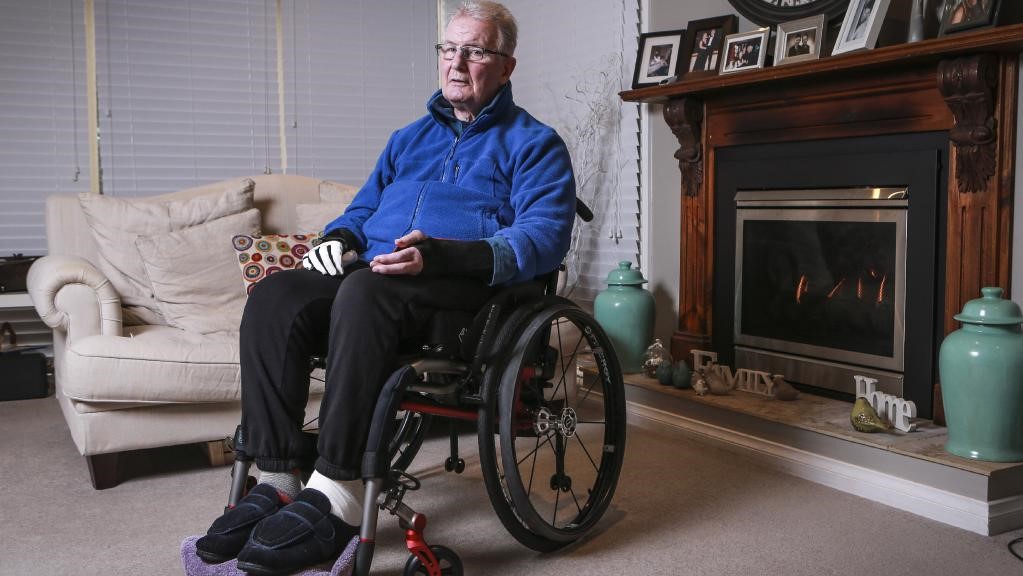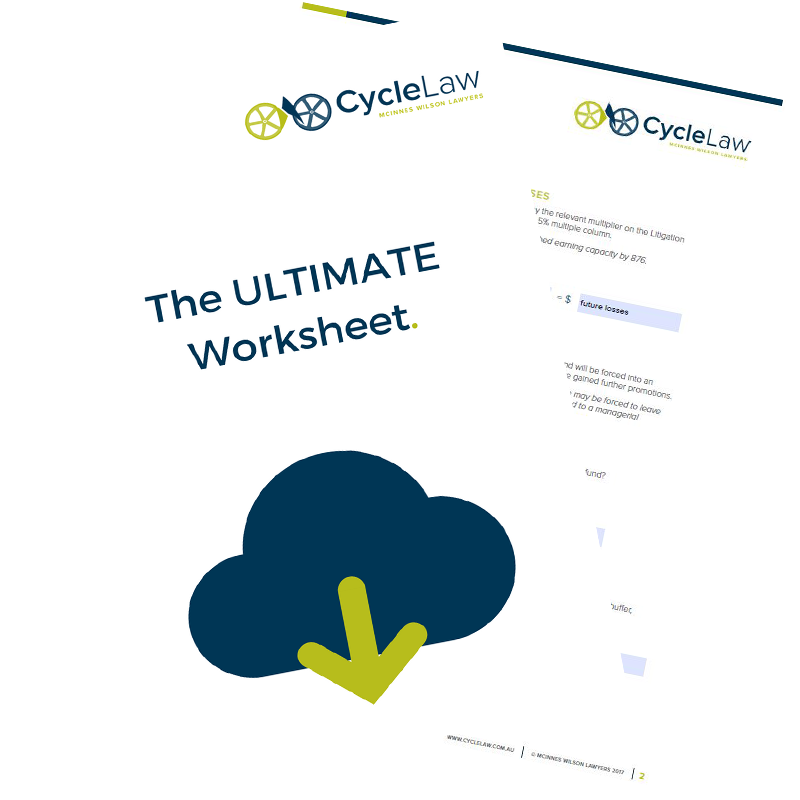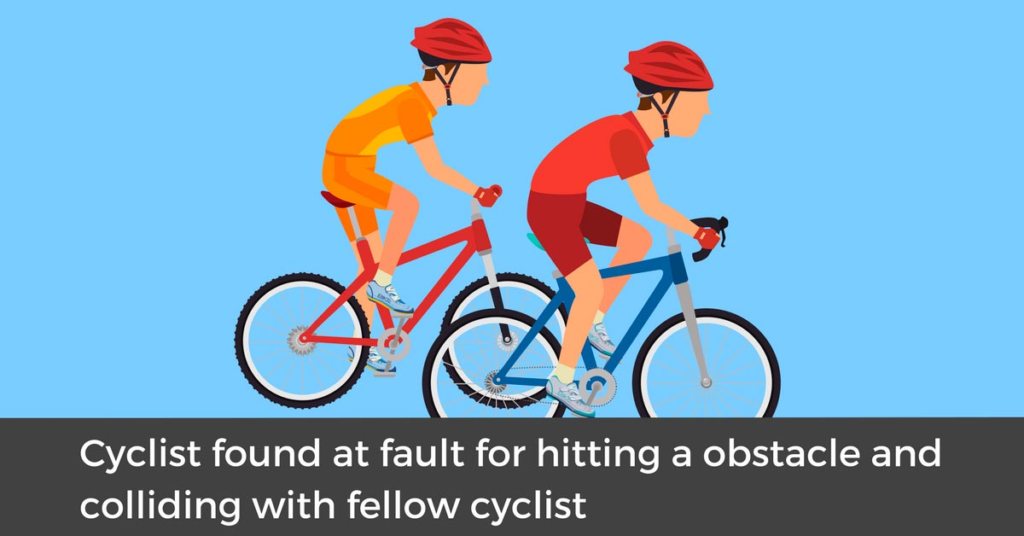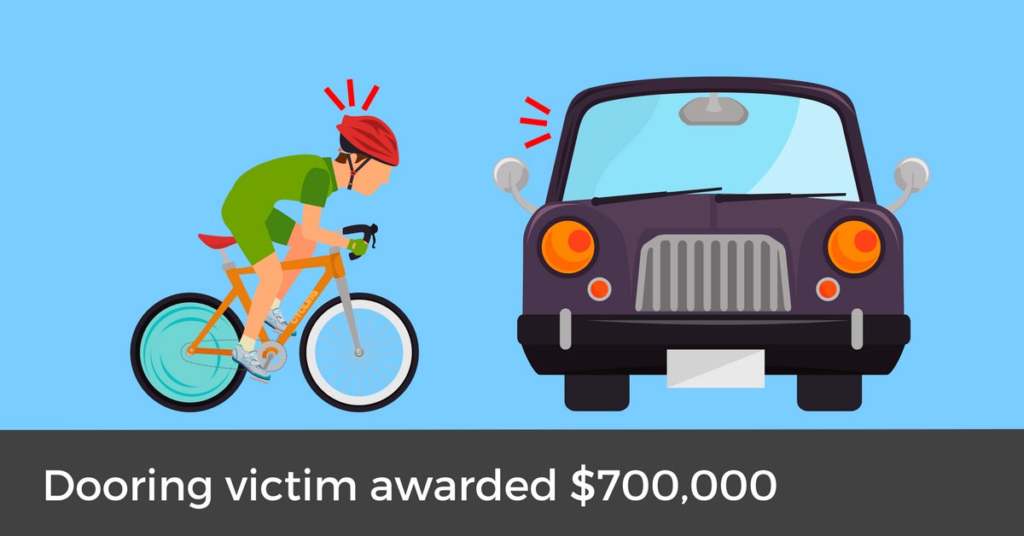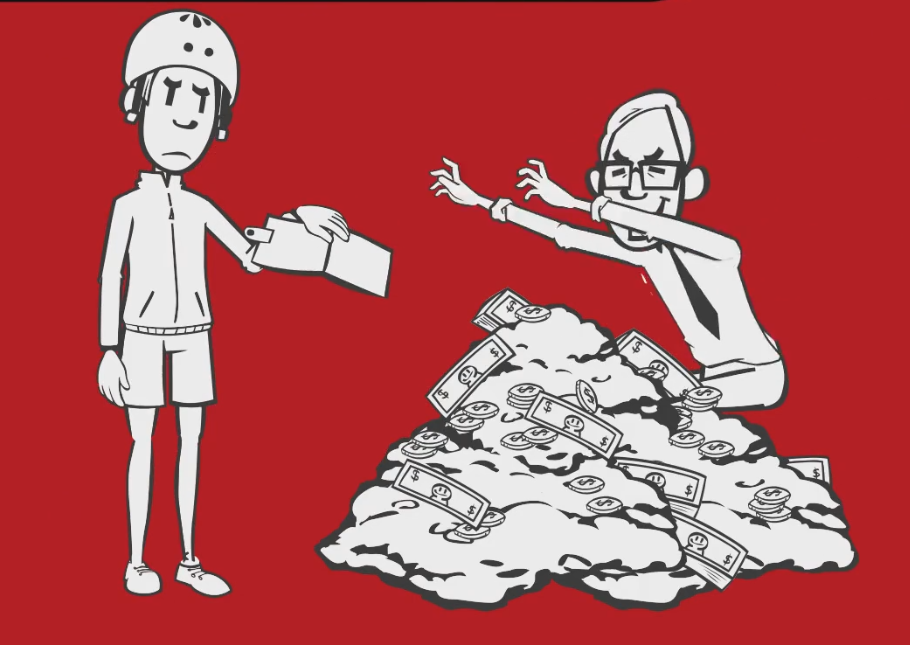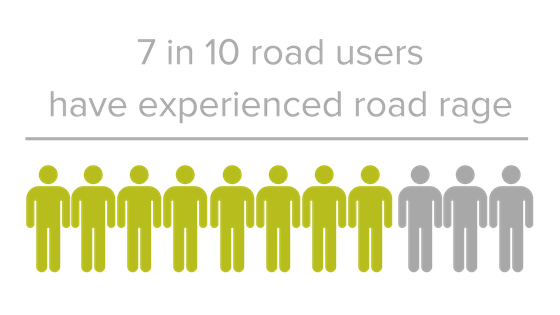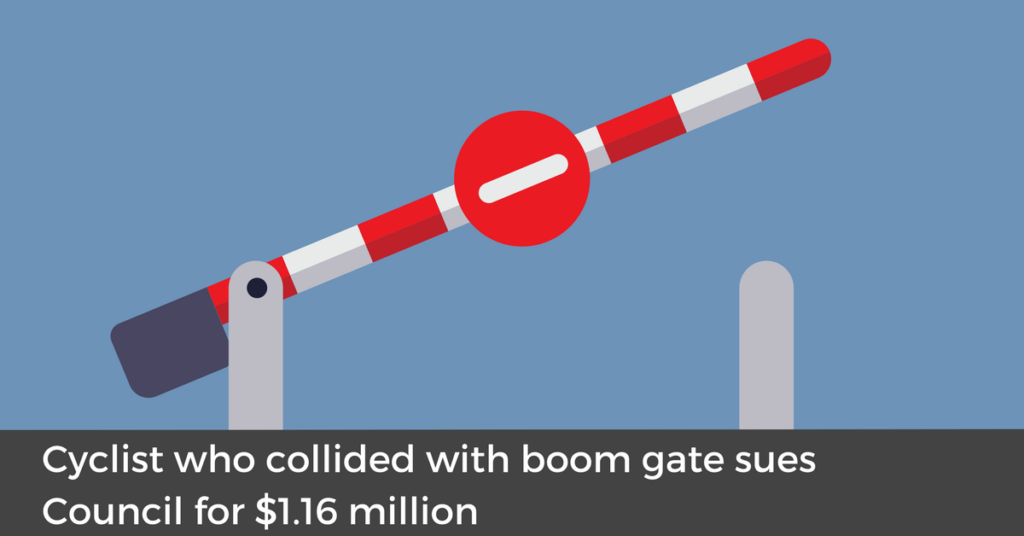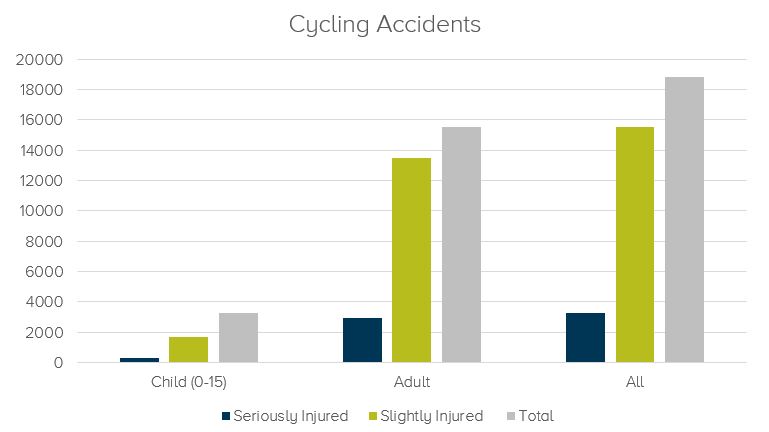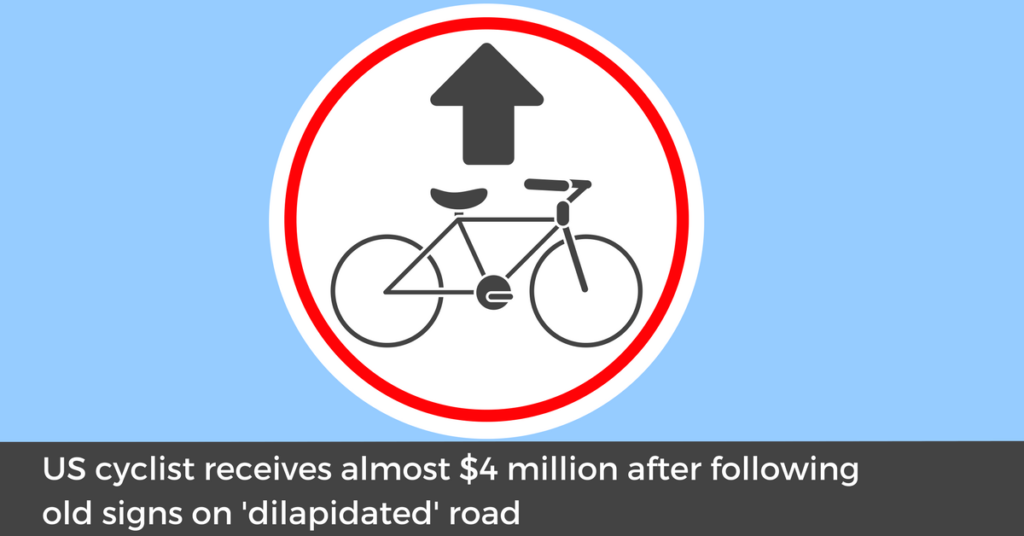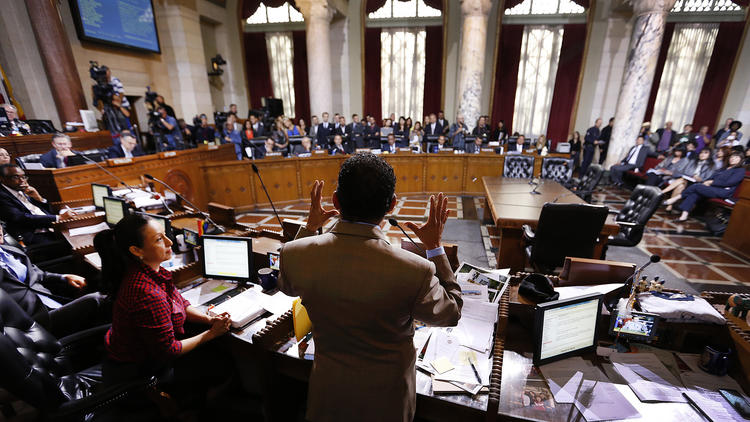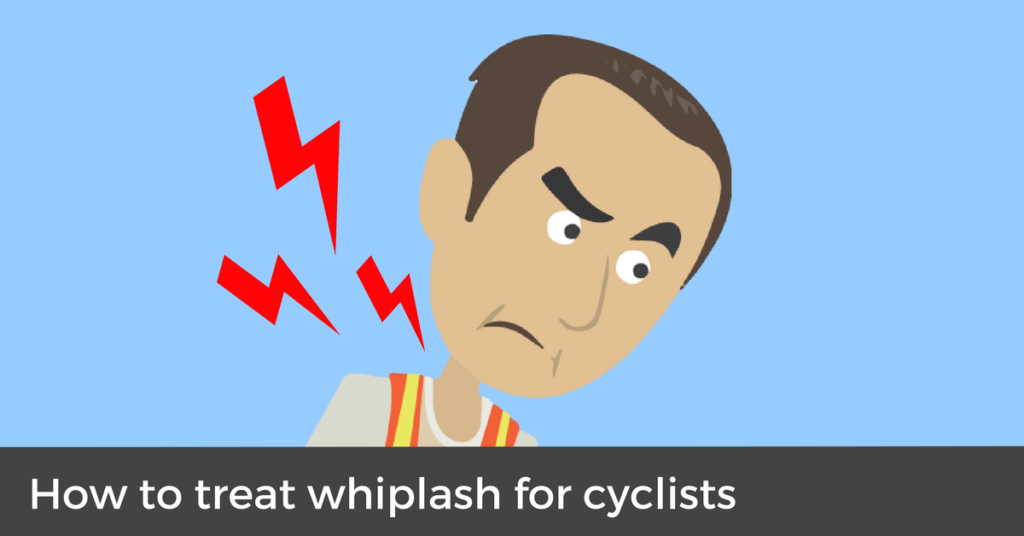The Facts
Michael Franklin lived in Canberra and rode his bicycle to and from work each day. He regularly rode home from work with his friend, David Blick.
At about 5.30pm on 17 June 2009, Michael and David left work on their bicycles. They were riding in a bicycle lane which ran alongside the roadway of Commonwealth Avenue and Capital Circle in Canberra. It was already dark but both bikes were fitted with powerful lights and there was good lighting in the area. There was a heavy flow of traffic alongside the bike path, as it was around peak hour.
Michael and David were riding at about 25 kilometres per hour. David was riding slightly in front of and to the left of Michael. David’s bike hit a piece of wood approximately 2 metres long that was lying in the bicycle lane directly in his path of travel.
When his front wheel struck the wood it caused his wheel to slide out from under him. David and his bicycle fell towards Michael. Their wheels locked together causing them to fall from their bicycles. Michael was thrown onto the roadway and directly into the path of oncoming traffic. He was run over by a motor vehicle. He attempted to crawl off the road following the accident but could not move his legs.
Michael sustained severe injuries in the accident including a fractured pelvis, a fracture to his lower back, internal bleeding, severe bruising and abrasions. Michael spent 28 days in the hospital and underwent surgery to his pelvis.
An external fixator was attached to his pelvis and protruded 10cm from his body where it was attached to rods. When Michael left the hospital he continued to suffer severe pain and infections from the device. The screw inserted into his body impinged on his sciatic nerve causing him severe pain. The screw was subsequently removed in 2012 but Michael continued to suffer ongoing pain in his lower back. He had to undergo extensive treatment up to the date of the trial.
The injuries affected Michael in his employment as an Applications Developer. Following the accident, he had to halve his working hours to an average of 25 hours a week with ongoing time off work due to his symptoms.
Want to know how to stop lawyers overcharging?
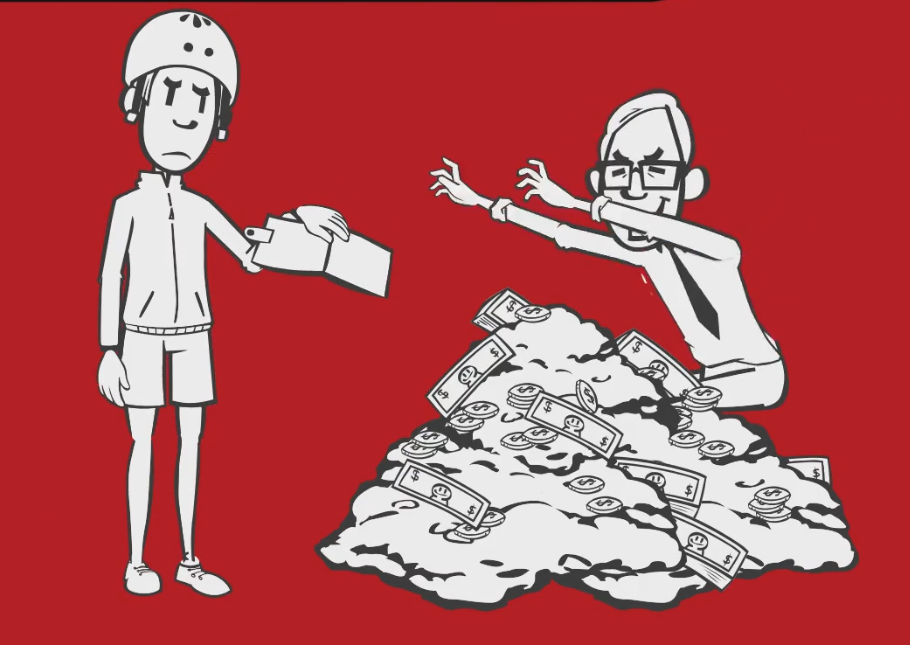
Watch our step-by-step video guide and discover:
Not watching the video may be the most expensive mistake of your life.
There was no evidence to suggest that the motor vehicle driver was at fault for running over Michael. Michael, therefore, sued David for failing to keep a proper lookout for dangers on the bicycle path and failing to avoid a collision with Michael.
David denied he was at fault for the accident. He argued that Michael should not succeed because David’s duty to Michael was only to take reasonable care in all the circumstances and he did that. He also argued that Michael contributed to the accident by failing to take proper care for his own safety whilst riding his bicycle.
Bicycle Accident Statistics
This situation is not unheard of. The graph below was produced by the Department of Infrastructure and Regional Development and shows the hospitalised injuries for cyclists from 2008 to 2010 and from 2011 to 2013 involving other vehicles including bicycles.
The data reveals that 85% of cyclist hospitalisations involved another vehicle (mostly a light vehicle) however 1 in every 6 cycling accidents were due to a collision with another cyclist.
This clearly shows that collisions between cyclists resulting in hospitalisations are more common than you might think.
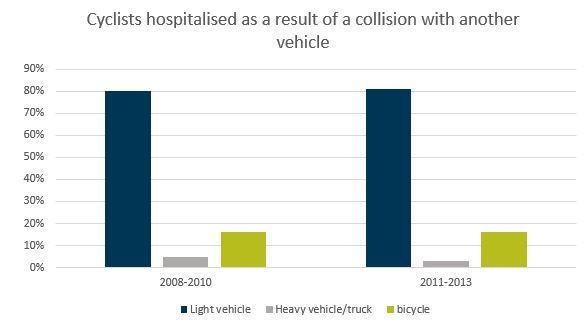
The Judgment
The matter was heard in the Supreme Court of the ACT by Justice Burns.
Who was at fault for the accident?
Justice Burns heard evidence from Michael and David in relation to the circumstances of the accident.
There can be no doubt that the defendant owed other road users, particularly cyclists such as the plaintiff, a duty of care to exercise reasonable care to avoid causing injury to other road users. In my opinion this duty extends to exercising reasonable care to avoid running over objects on the cycleway likely to cause him to lose control of his bicycle.
Award for damages
Justice Burns believed Dr Le Leu was the person most qualified to give evidence in relation to Michael’s working hours. He accepted his evidence over the evidence from David’s orthopaedic surgeon and neurologist. Justice Burns was satisfied from that evidence that Michael would only be able to work 25 hours a week until his retirement age of 67 years.
He awarded Michael $1,659,392.75 in damages. Of that award, $335,000.00 was awarded for loss of wages to the date of trial and $838,925.75 of that award related to his future loss of earnings to retirement.
Cycle Law's Opinion
Medical Evidence
This case resulted in a very good outcome for Michael. The fact that Michael obtained expert advice from an occupational physician was crucial to the successful outcome of his claim. The judge accepted the evidence of the occupational physician and awarded him compensation on the basis of that evidence.
David did not provide any evidence from an occupational physician/therapist. Because of that, the judge accepted Michael’s medical evidence over David’s medical evidence. Michael’s claim for loss of earnings represented a major component of his claim for damages.
Fault for the Accident
Cyclists often travel in groups and ride closely together. That is the nature of cycling however it is important to remember that as a cyclist you have to exercise reasonable care to avoid causing injury to other road users. This extends to other cyclists you may be riding with. This case shows the importance of cyclists keeping a careful lookout for any obstacles in their path of travel so they can take evasive action to avoid causing injuries to other cyclists.
The Consequences
The importance of obtaining the correct medical evidence
It is important in any case to ensure you obtain the correct expert evidence. If your work has been affected by the accident then it is crucial to obtain a report from an occupational physician/therapist.
If you have that evidence to support your claim you are more likely to be awarded damages for loss of earnings in the past and future.
The importance of cyclists obtaining public liability insurance
In the case outlined above, Michael’s compensation was paid out by David’s insurer. Although claims are lodged against the rider that caused the accident they are likely covered by public liability insurance either through the other party’s house and contents insurance or through bicycle insurance. This means that although someone might be suing their fellow cyclist, any compensation that’s awarded will be paid by the insurance company and not the cyclist.
Written by Emily Billiau | Principal


